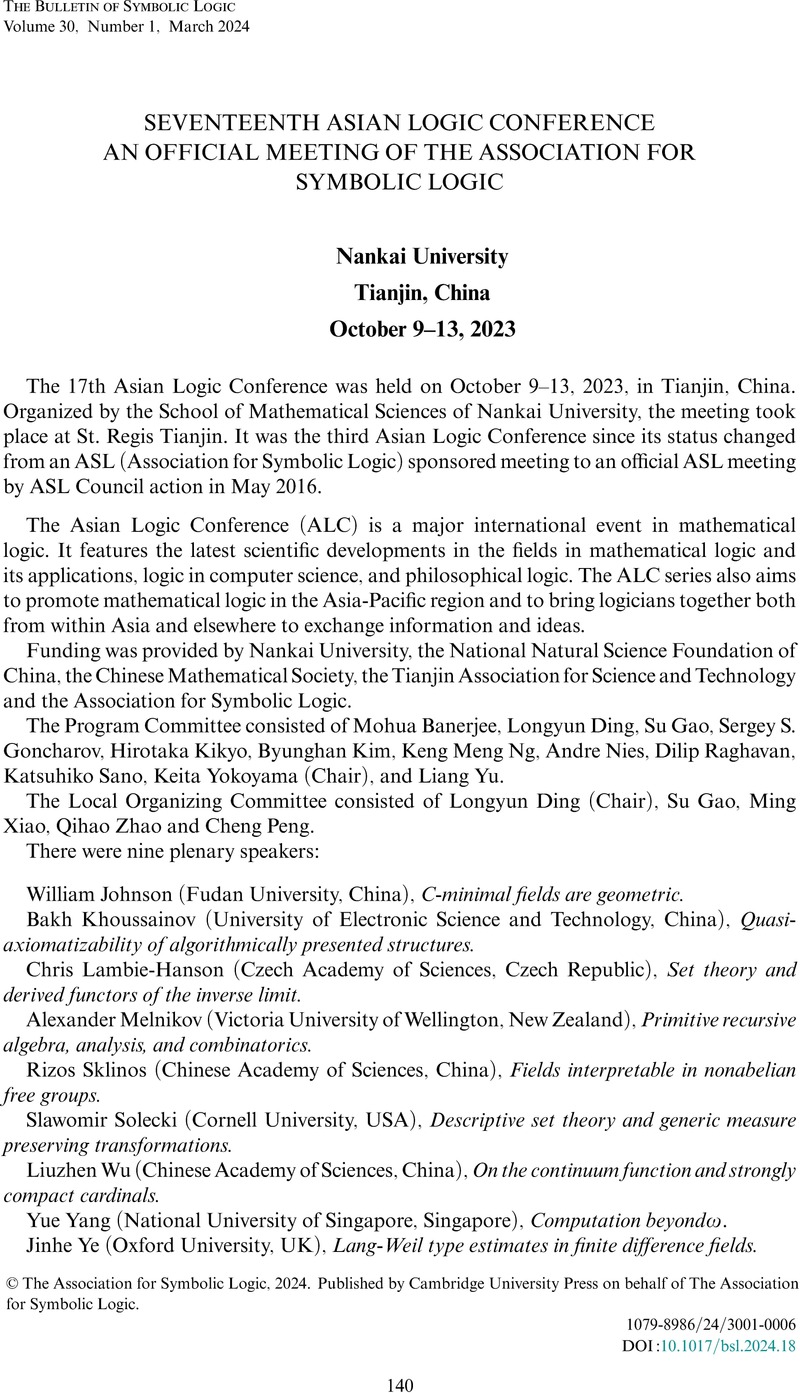No CrossRef data available.
Article contents
SEVENTEENTH ASIAN LOGIC CONFERENCE AN OFFICIAL MEETING OF THE ASSOCIATION FOR SYMBOLIC LOGIC Nankai University Tianjin, China October 9–13, 2023
Published online by Cambridge University Press: 02 April 2024
Abstract
An abstract is not available for this content so a preview has been provided. Please use the Get access link above for information on how to access this content.

Information
- Type
- Meeting Report
- Information
- Copyright
- © The Association for Symbolic Logic, 2024. Published by Cambridge University Press on behalf of The Association for Symbolic Logic


